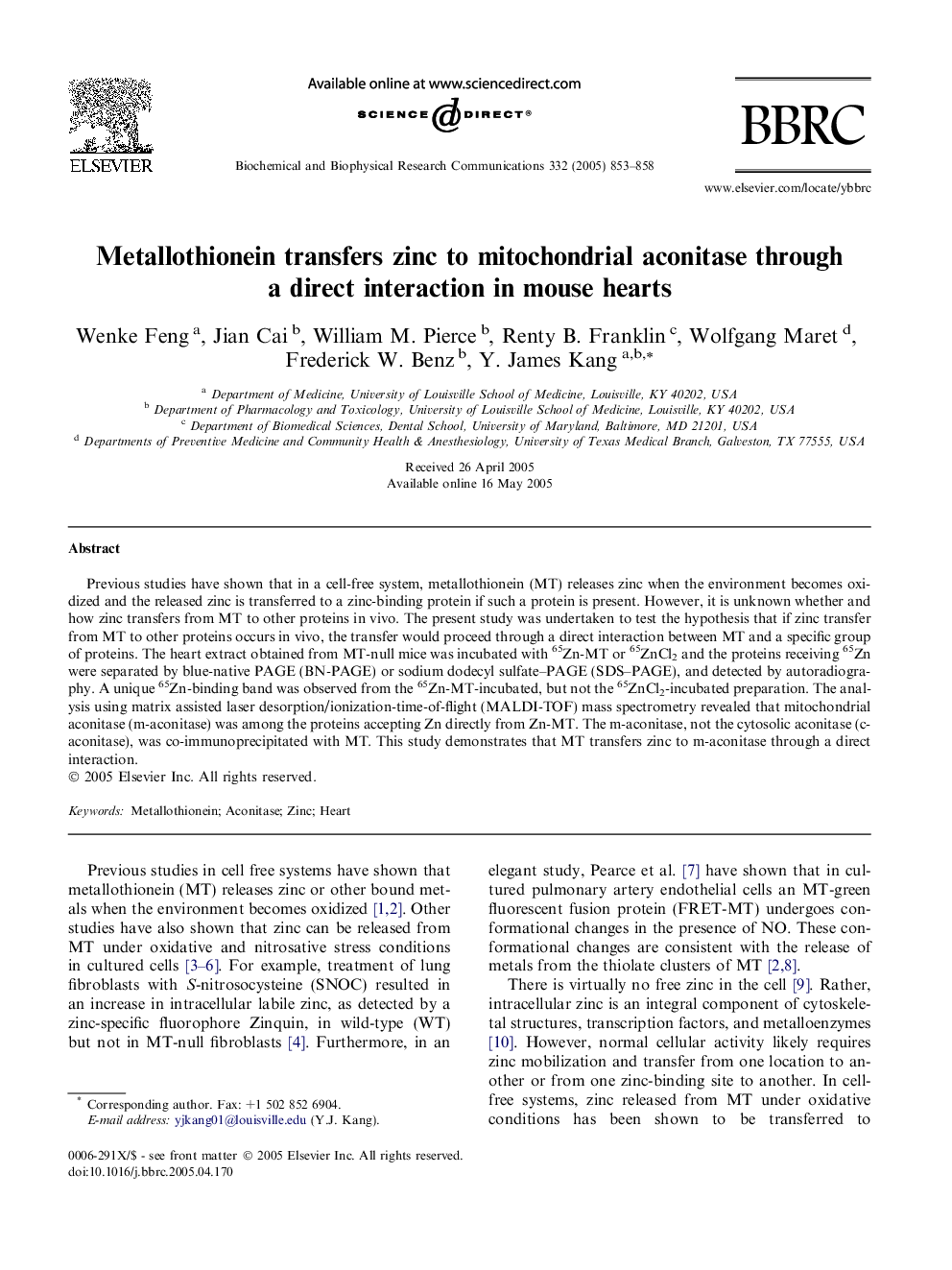| Article ID | Journal | Published Year | Pages | File Type |
|---|---|---|---|---|
| 10767718 | Biochemical and Biophysical Research Communications | 2005 | 6 Pages |
Abstract
Previous studies have shown that in a cell-free system, metallothionein (MT) releases zinc when the environment becomes oxidized and the released zinc is transferred to a zinc-binding protein if such a protein is present. However, it is unknown whether and how zinc transfers from MT to other proteins in vivo. The present study was undertaken to test the hypothesis that if zinc transfer from MT to other proteins occurs in vivo, the transfer would proceed through a direct interaction between MT and a specific group of proteins. The heart extract obtained from MT-null mice was incubated with 65Zn-MT or 65ZnCl2 and the proteins receiving 65Zn were separated by blue-native PAGE (BN-PAGE) or sodium dodecyl sulfate-PAGE (SDS-PAGE), and detected by autoradiography. A unique 65Zn-binding band was observed from the 65Zn-MT-incubated, but not the 65ZnCl2-incubated preparation. The analysis using matrix assisted laser desorption/ionization-time-of-flight (MALDI-TOF) mass spectrometry revealed that mitochondrial aconitase (m-aconitase) was among the proteins accepting Zn directly from Zn-MT. The m-aconitase, not the cytosolic aconitase (c-aconitase), was co-immunoprecipitated with MT. This study demonstrates that MT transfers zinc to m-aconitase through a direct interaction.
Keywords
Related Topics
Life Sciences
Biochemistry, Genetics and Molecular Biology
Biochemistry
Authors
Wenke Feng, Jian Cai, William M. Pierce, Renty B. Franklin, Wolfgang Maret, Frederick W. Benz, Y. James Kang,
